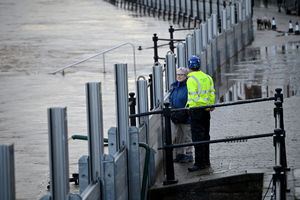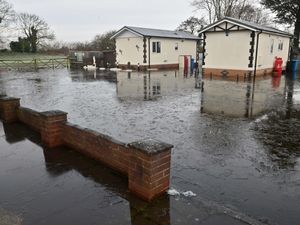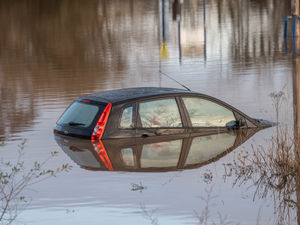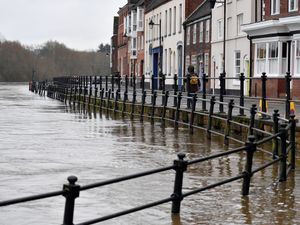11 simple steps to tackle the flow of water on the River Severn and help prevent flooding
Nature is set to be used as a tool to control flood along the length of the River Severn.

The Environment Agency (EA) has published information about its much-anticipated strategy in the Severn Valley.
It aims to worth extensively upstream in order to protect the likes of Shrewsbury, Bridgnorth, Ironbridge and Bewdley.
The ‘Severn Valley Water Management Scheme’ (SVWMS reveals ambitions to combine “traditional engineering and Nature-based Solutions (NbS)”.
It lists potential solutions, which include natural management like tree planting, dams and and asking farmers to work in an different way.
The EA report outlines how the issue of flooding is unlikely to go away – with flooding events becoming more frequent in recent years,
It says: “Significant floods in recent decades have caused damage to homes and businesses and have impacted local infrastructure and disrupted travel.
“Flooding in the winter of 2019 and 2020 resulted in over 1,500 homes being flooded across the Severn catchment.”
It added: “Whilst existing flood risk management assets and schemes prevented over 14,500 homes from being flooded, there are still communities and urban centres that remain at risk.
“Flooding events are also becoming more frequent with widespread flooding occurring again in 2021, 2022 and during this past winter 2023/2024. So far across this autumn and winter we have seen 10 named storms, with storms Babet, Gerrit and Henk causing particularly high level of flooding and damage through the Severn Uplands.”
So, here are 11 steps that have been identified as ways that could help the problem:
Buffer strips: Areas adjacent to rivers, ditches, dykes, becks and watercourses where woody planting or grass buffers can be created to increase roughness and slow runoff
Peatland restoration: Carbon-rich wetlands and in their natural condition, help to slow flow of water from the uplands and provide floodplain storage in the wetlands as well as providing a significant carbon store and supporting important species
Tree planting: Increasing tree cover has the potential to reduce flood risk by promoting soil infiltration, intercepting water on the canopy and increasing ground roughness, thus, slowing down the flow of surface runoff
Floodplain restoration: Increasing the area allowed to flood in extreme events, restoring hydrological connection between rivers and floodplains
Removal or set back of existing defences: Similar to floodplain restoration, these can open opportunities for improved terrestrial and fluvial habitat
Soil management: The way rural land is managed affects the pathways and speed at which rainfall enters watercourses. Simple steps such as contour ploughing can help
Gully stuffing: Filling erosion gullies or historic drainage ditches with vegetation or introducing small dams to store waters within headwaters
Passive floodplain storage: Establishing a pathway between a watercourse and its natural floodplain and allowing for additional storage
Decreasing run-off: Constructed features such as earth bunds or timber ‘leaky’ barriers designed to intercept and attenuate overland flows
Large woody material: Utilisation of large, natural pieces of wood (trunks, branches etc.) across or within the channel to slow the flow, leading to greater flow diversity and connectivity with floodplains
11 Formal flood storage areas: To store water temporarily in order to reduce and control the flood peak flows downstream




